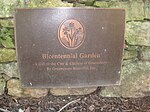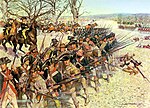AHA International School
2001 establishments in North CarolinaBoarding schools in North CarolinaEducational institutions established in 2001Jewish day schools in the United StatesJews and Judaism in North Carolina ... and 4 more
Pluralistic Jewish day schoolsPreparatory schools in North CarolinaPrivate high schools in North CarolinaSchools in Greensboro, North Carolina
AHA International School (formerly American Hebrew Academy until 2020) was intended to be an international college-preparatory school located in Greensboro, North Carolina. It was to be open to students of all faiths but was originally founded as a Jewish international school, American Hebrew Academy, the only such school in the world for boarding and day students between 9th and 12th grade. The coeducational school's 100-acre (40 ha) campus was designed by Aaron Green, protégé of renowned architect Frank Lloyd Wright. The school closed in June 2019 but later announced plans to reopen for the 2021–2022 school year.
Excerpt from the Wikipedia article AHA International School (License: CC BY-SA 3.0, Authors).AHA International School
Hobbs Road, Greensboro
Geographical coordinates (GPS) Address Nearby Places Show on map
Geographical coordinates (GPS)
| Latitude | Longitude |
|---|---|
| N 36.1089 ° | E -79.8708 ° |
Address
American Hebrew Academy
Hobbs Road
27403 Greensboro
North Carolina, United States
Open on Google Maps






